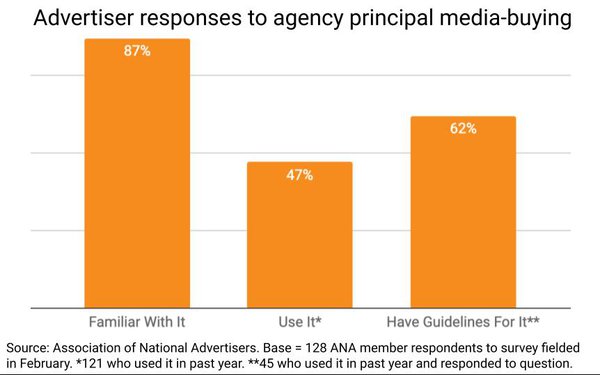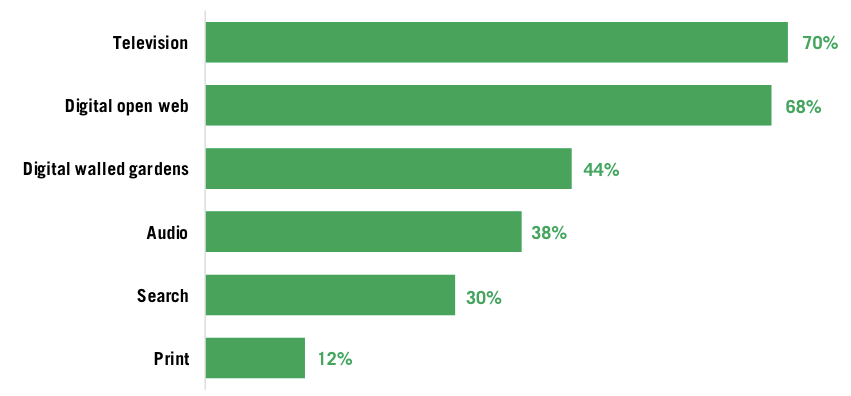
Nearly a decade after
the Association of National Advertisers began focusing on fixing transparency issues associated with agency media-buying, there still are some profound areas of in which major marketers lack
knowledge, especially the concept of practice of so-called principal media buying in which the agency, not the client, is the principal owner of the media being used to advertise their products and
services.
The concept is highly nuanced, for sure, and often viewed differently depending on who is defining it, but in its simplest form it means the agency is the principal paying to acquire
the media, and effectively reselling it to their clients, vs. acting as an agent and buying it on behalf of its client.
The concept can get even more complex, especially when buying digital
media in which platforms treat the agencies as principals regardless of what the relationship is between the agency and the client, or in programmatic media-buying, or even with some forms of analog
media, especially ones in which agencies pay the media directly with cash upfront or barter goods and services to effectively do the same and create time banks whose credits are used to run a client's
campaigns.
advertisement
advertisement
In fact, a survey conducted by the ANA in February found that among advertisers working with agencies that utilize principal media-buying, linear television still is the No. form of
media being bought that way (see chart below).
But the reality is many clients probably do not know or truly understand the nature of their agency's principal media-buying practices.
Less than half (48%) of ANA members responding to the survey indicated they were "very familiar" with the concept, while 39% said they were "somewhat familiar" and 13% were not familiar with it at
all.
And less than half the respondents (47%) said they used it in the past year, and 62% of them said they have guidelines for how their agency works with them vis a vis principal
media-buying.
As the ANA's previous transparency reports uncovered, the reality is many clients who are even familiar with the concept of principal media-buying don't know all the ways their
agencies are treated by media sellers in that regard, though there are some areas of agency media-buying where it is explicitly understood and stated.
The report lists examples of explicit
principal media-buying practices with in each of the major agency holding companies, including:
- Dentsu's Agyle Advantange and Amnet
- Interpublic's Orion (a barter media-buying specialist)
- WPP's Nexus (including both
Finecast and Xaxis, GroupM Flex, and plista
None of these agency units participated in the ANA's just-released "Principal Media Report," but were listed simply as examples.
As
important as the new report is for benchmarking an often opaque area of the media-buying industry, it is incomplete and not representative of the greater world of media-buying, because it is only
shows what the biggest U.S. advertisers know and think about the practice. The reality is that in the digital media-buying world, the vast majority of all buys are based on a principal buying the
media: long-tail small and medium size advertisers who buy it directly from the platforms themselves.
